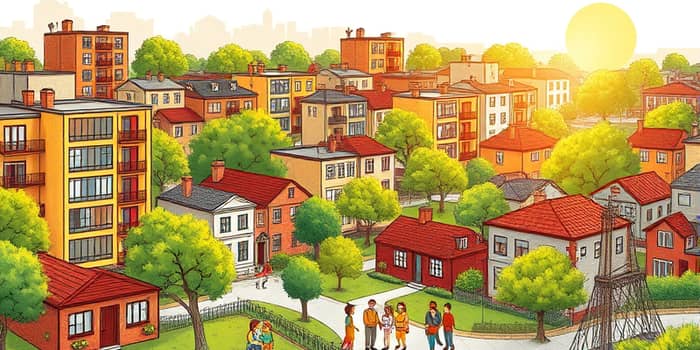
The global crisis of housing affordability has escalated from a localized challenge to a defining macroeconomic issue. Across continents, families, young professionals, and essential workers face mounting barriers to secure stable, affordable shelter. This article explores the scale, drivers, and impacts of the crisis, concluding with actionable policy and market solutions to alleviate the burden on vulnerable populations.
By examining recent data and expert insights, we reveal how the shortage has grown and why it demands urgent, coordinated responses at every level of government and society.
Globally, the United Nations reports that by 2030 nearly 3 billion people will lack adequate housing. Already, 1.8 billion live in inadequate housing, and 1.1 billion reside in informal settlements—a staggering increase of 165 million over two decades. These figures underscore how housing pressure has outpaced population growth, leaving billions exposed to overcrowding, health risks, and insecurity.
In the United States, the shortage is equally severe. There is a severe shortage of 7.3 million affordable units and an additional 7.1 million homes needed for extremely low-income renters. Today, only 35 suitable units exist per 100 households in the lowest income bracket, driving 49.7% of renters and 27.1% of mortgage holders to spend over 30% of their income on housing. As of 2023, 31.3% of American households are cost-burdened, a clear signal of widespread distress.
Multiple forces converge to deepen the affordability gap. On the economic front, mortgage interest rates surged to nearly 8% by late 2023, up from historic lows near 3.5% in early 2022. This spike has priced many first-time buyers out of the market and frozen mobility for existing homeowners facing high refinancing costs.
Meanwhile, housing prices have risen more than double the growth in median incomes since 2020, producing dramatic rise in housing costs unprecedented in modern history. The median price-to-income ratio in the U.S. climbed from four to five times twenty years ago to six times today. Renters face similar strains: median rent-to-income ratios increased from 25% to 30% in the same period, with 45% of renters cost-burdened in 2022 up from 20% in 1960.
Supply constraints exacerbate these pressures. Restrictive land use regulations, zoning laws, and outdated building codes limit new construction and densification options. In many metropolitan regions, strict suburban land-use restrictions choke off buildable land, driving prices skyward. The post-pandemic shift to remote work—while offering lifestyle flexibility—triggered a post-pandemic rise in remote work demand for larger homes and office space at home, further straining inventory and pricing.
The ripple effects of unaffordable housing extend beyond individual stress. Economically, high housing costs erode disposable income, suppress consumer spending, and threaten broader growth. Essential workers—teachers, nurses, first responders—are often priced out of communities near their workplaces, leading to labor shortages in critical public services.
Socially, the crisis deepens inequality. When housing becomes the largest line item in household budgets, families must forgo health care, education, and nutritious food. Homelessness rates climb, and the instability of frequent moves undermines child wellbeing and community cohesion. In cities where median home prices exceed seven times median income, such as Miami, the gulf between haves and have-nots widens, fueling social tension and reducing long-term prosperity.
Addressing this crisis requires a multi-pronged approach, blending regulatory reform, public investment, and private capital mobilization.
Below is a concise summary of the most critical indicators illustrating the depth of the housing affordability challenge:
The housing affordability crisis is more than a market imbalance; it is a macroeconomic threat and a social equity issue. As costs continue to outpace wages and restrictive policies limit supply, the risk of deepening inequality and economic stagnation grows. However, through forward-looking regulatory reforms, targeted public investment, and innovative private sector engagement, a path toward sustainable, inclusive housing is possible.
Policymakers, developers, and communities must act in concert to ensure that affordable shelter is not a privilege but a universal right, safeguarding the economic and social well-being of current and future generations.
References













